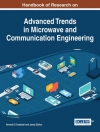This book presents a tutorial review of van der Pol model, a universal oscillator model for the analysis of modern RC−oscillators in weak and strong nonlinear regimes. A detailed analysis of the injection locking in van der Pol oscillators is also presented. The relation between the van der Pol parameters and several circuit implementations in CMOS nanotechnology is given, showing that this theory is very useful in the optimization of oscillator key parameters, such as: frequency, amplitude and phase relationship. The authors discuss three different examples: active coupling RC−oscillators, capacitive coupling RC−oscillators, and two-integrator oscillator working in the sinusoidal regime.
· Provides a detailed tutorial on the van der Pol oscillator model, which can be the basis for the analysis of modern RC−oscillators in weak and strong nonlinear regimes;
· Demonstrations the relationship between the van der Pol parameters and several circuit implementations in CMOS nanotechnology, showing that this theory is a powerful tool in the optimization of key oscillator parameters;
· Provides three circuit prototypes implemented in modern CMOS nanotechnology in the GHz range, with applications in low area, low power, low cost, wireless sensor network (WSN) applications (e.g. Io T, BLE).
สารบัญ
Introduction.- Sinusoidal Oscillators.- van der Pol Oscillator.- Injection Locking.- Active coupling RC−oscillator.- Capacitive coupling RC-oscillator.- Two-integrator oscillator.- Conclusions.
เกี่ยวกับผู้แต่ง
João Casaleiro was born in Portugal, in 1977. He received the B.Sc. degree from Instituto Superior de Engenharia de Lisboa (ISEL), Portugal, in 2001 and the Ph.D. degree from Universidade Nova de Lisboa (UNL), in 2015, both in electrical engineering. In 2004, he joined the Instituto Superior de Engenharia de Lisboa (ISEL) where he is currently a Professor. He is a researcher at CTS-UNINOVA since 2009, and his research interests include integrated CMOS receivers, oscillators and mixers. Prof. Casaleiro is an IEEE
Member since 2009, and secretary of the IEEE SSC chapter for the period 2018-2019. Luis B. Oliveira (S’02–M’07-SM’16) was born in Lisbon, Portugal, in 1979. He graduated with a degree in electrical and computer engineering, and a Ph.D. degree, in 2002 and 2007 respectively, from Instituto Superior Técnico (IST), Technical University of Lisbon. In 2007, he joined the teaching staff of the Department of Electrical Engineering of Faculdade de Ciências e Tecnologia, Universidade Nova de Lisboa, and is currently a researcher at CTS-UNINOVA. His current research interests are in RF oscillators, PLLs, LNAs, mixers, and other building blocks for RF integrated transceivers. Prof. Oliveira is an IEEE Senior Member, vice-chair of the IEEE Portugal Executive Committee, for the period 2018-2019, and chair of the Broadcast Technology Society, Circuits and Systems Society, and Consumer Electronics Society, IEEE Joint Chapter, since 2016. He is a member of the IEEE CASS Analog Signal Processing Technical Committee, ASPTC, (the largest within CASS), since 2008. He has more than 100 publications in International Journals and Conferences, and is co-author of two books: “Analysis and Design of Quadrature Oscillators” (Springer, 2008) and “Wideband CMOS Receivers”, (Springer, 2015).
Igor M. Filanovsky was born in Kirov, U.S.S.R., in 1940. He received the equivalent of the M.Sc. degree in 1962, and the equivalent of the Ph.D. degree in 1968, both in electrical engineering, from V.I. Ulianov (Lenin) Instititute of Electrical Engineering, Leningrad. He is currently a Professor Emeritus in the Department of Electrical Engineering, University of Alberta. His research interests include network analysis and synthesis, oscillations theory and applied microelectronics. He published about 200 papers on these topics in IEEE Transactions and conference proceedings. Dr. Filanovsky is a Life Senior Member of IEEE. He has served two terms as an Associated Editor of IEEE Transactions on Circuits and Systems, Part 1. At the present time he is an Associate Editor of the International Journal of Circuit Theory and Applications.












